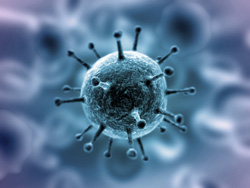Herpes infection increases HIV susceptibility in women
Infection and inflammation of the genital tract by a sexually transmitted disease (STD) such as Herpes simplex virus type 2 (HSV-2) upset the mucosal layer of the vagina. Blisters or ulcers on the genitalia are the most frequently noticed symptoms. This vulnerable state increases the expression of human immunodeficiency virus (HIV) receptors and co-receptors on the surrounding cells affected by HSV-2. The 'Double infection by HSV-2 and HIV: how does HSV-2 infection facilitate for HIV infection?' (APO-HSV-2/HIV) project set out to discover how programmed cell death (apoptosis) during HSV-2 infection contributes towards upsetting the delicate balances in the vaginal environment, and how this can influence the outcome of combined HIV-1/HSV-2 infection. Apoptosis is a necessary process for the regular renewal of vaginal epithelium or tissue. Fas, a regulatory protein that activates apoptosis, has been shown to play a role in maintaining vaginal epithelium. The project aimed to determine if HSV-2 infection can lead to apoptosis and changes in vaginal mucosa, and how Fas and other receptors contribute to genital lesions during HSV-2 infection. Importantly, researchers wanted to examine how HSV-2 infection increases risk of HIV-1 infection. Two mouse models were used. The in vitro model of HSV-2 epithelial infection showed a moderate level of apoptosis during infection, and the in vivo herpes genitalis model showed the presence of apoptotic HSV-2 infected and uninfected cells. In assessing the role of Fas in the development of lesions during HSV-2 infection, results showed that a Fas and Fas ligand (FasL) deficiency led to increased apoptosis and development of bigger vaginal lesions. Project members concluded that HSV-2 infection leads to heightened processes of apoptosis and inflammation. However, Fas/FasL-induced apoptosis helps regulate the inflammatory response early on in HSV-2 infection and thus helps maintain the balance in vaginal mucosa. This is an important finding for the development of microbicides, topical antiviral agents that can protect against STDs.







